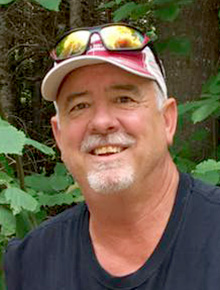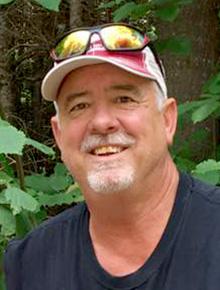
My household includes four Labrador retrievers, which some people think is a lot of dogs. It wasn’t always this way for me.
I was volunteering at the Little Sioux Retriever Club Hunt test back in the mid-90s and I was sitting around five different dog trainers. I asked them as a group, “Why would anyone need more than one dog?” They all started laughing.
I figured you can only hunt one dog at a time so what good were three or four hanging around the house.
I answered that question on my own about 90 days later. I had one female yellow Lab named Scout. She hunted opening weekend for pheasants with me and the guy who trained her.
I took her out on my first solo hunt that following Monday when she ran full bore into a bent-over T-post and ended up with about 30 stitches.
She was out of the hunting game for three weeks, and by the time she was back to 100 percent, the hunting season that year was almost half over.
I knew right then and there that I needed more than one dog.
The following season I was out in South Dakota with two dogs. I hunted for about 30 minutes, and with super high temperatures, that was about all the dog could give without endangering its health.
I took out dog No. 2 with the same results, and by noon I was out of dog. Two dogs tuckered out from high temperatures.
As life would have it, I ended up with four dogs.
Now, I am not your average pheasant hunter. Of the 60,000 pheasant hunters in Minnesota the average harvest is 3.7 birds per year per person. I shoot way more than that. I hunt in several different states and only hunt birds.
I buy a deer license every year so I can legally mentor kids on my property. But I have never filled a deer tag. I could have most likely shot a deer almost every year, but I get all the venison I want or need from my friends and have never had a chance at a true trophy buck. If I ever get that chance, I would certainly take it. But I use my dogs primarily for hunting birds.
My fourth dog is 18 months old and getting ready to participate in his first wild bird season.
I completed all of the basic work with him and then sent him to my trainer friend in Bemidji so he could work him on some live birds.
Many dog owners can do this at a game farm, but there is no place within 100 miles of my home to do so. It is just not an option at that distance for a guy that still has a day job. This training is best started and done multiple days each week.
So, Ghost went to a pheasant preserve on Oct. 12 for about three weeks of actual on-the-ground pheasant hunting.
On a pheasant preserve they often shoot 100 birds or more in a morning. There is no place on earth that a new dog can get that amount of experience in that short a time.
If the average hunter harvests 1.7 birds per season, a more dedicated hunter might shoot 10-20 in a season. One morning on the preserve can be the equivalent of 10 years of retrieving experience in one day.
If the dog does his thing for three weeks, it is an immeasurable benefit to both the dog and the owner. No place else could this be duplicated.
You do have the risk of the dog getting hurt or even killed by a customer of the preserve.
Even if my dog trainer friend is right on the spot, you can still have issues with unsafe hunters.
This method has been part of my training regime for the past 20-plus years.
Ghost is the son of my oldest dog Tracer. He has been gone for four months now and I really do miss him. If the dog lives 12 years, it is worth the four-month absence to end up with a stallion dog as a result. When he gets home, we will have a love em’ up reunion.
With four stellar dogs between 18 months and 10 years of age, I have a bench deep enough to get me through just about any season of injuries or other issues.
Dogs are my life. Pheasant hunting is my life. They are unequivocally linked together.
The interdependent relationship between dog and hunter is one most folks will never understand, but it is one that I cherish almost more than anything else.
Scott Rall, Worthington, is a habitat conservationist, avid hunting and fishing enthusiast and is president of Nobles County Pheasants Forever. He can be reached at scottarall@gmail.com. or on Twitter @habitat champion.



